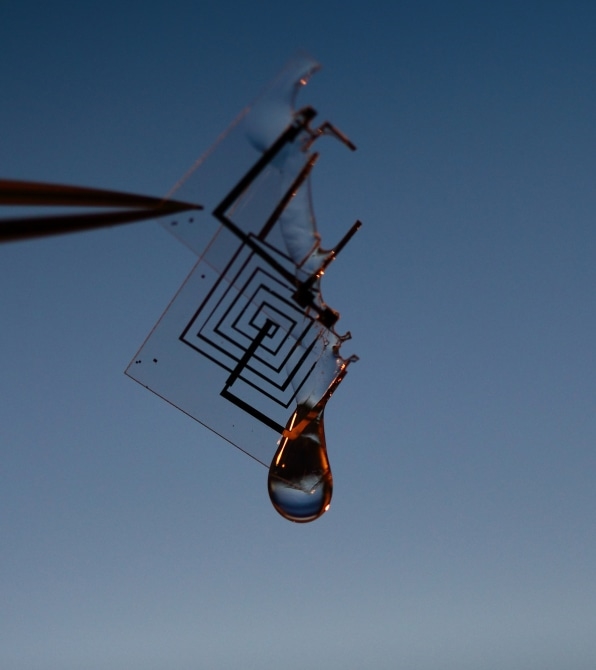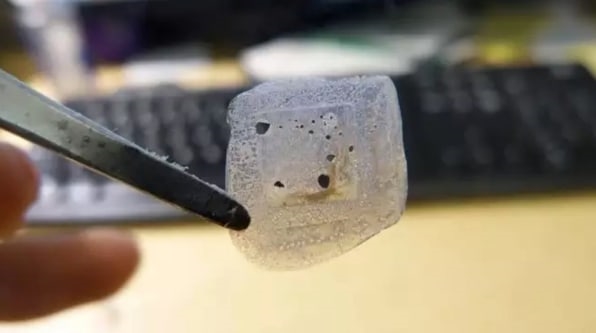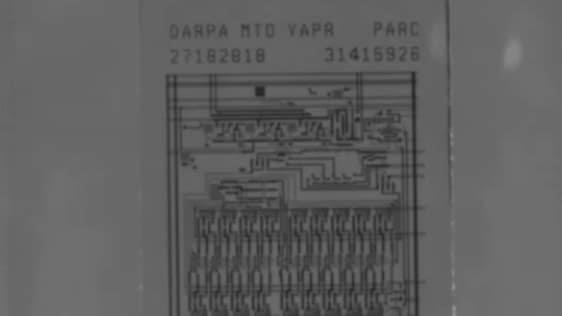Welcome To The Era Of Self-Destructing Gadgets, From Phones To Drones
The old Mission Impossible TV series was 1960s cool. But star Peter Graves never told us how those recorded messages were able to “self-destruct in five seconds.” Neither did Tom Cruise.
Mission Impossible gadgets self-destruct for one reason: To erase data. Great idea, Hollywood!
But the U.S. military has an even better idea: What about gadgets that self-destruct so completely you can’t even tell they were ever there? And what if those gadgets weren’t Peter Graves’s reel-to-reel tape recorders or Tom Cruise’s exploding sunglasses, but all manner of wearables, smartphones, laptops, and even drones?
The Pentagon is working on devices for soldiers and spies that can explode, melt, liquify, evaporate, or otherwise self-destruct on command, on a schedule, or under specific environmental conditions. Tech companies and research universities are working on such technologies, too.
One might assume the purpose for this circuit seppuku is Mission Impossible-style data security. But there are other reasons, many of them unexpected.
Even the Pentagon’s desire for vanishing electronics has less to do with data security and more to do with something called the “leave behind” problem. Wherever military units leave gear behind on the battlefield, the high-tech stuff can be captured, learned from, and repurposed by the enemy.
Other great reasons for disappearing electronics include environmentalism, public safety, stealth, personal privacy, crime prevention, and even medicine. And the variety of methods for achieving self-destruction is nothing short of astonishing.

Blowing Them Up Real Good
Five years ago, the Pentagon’s Defense Advanced Research Projects Agency (DARPA) called on tech companies and research universities to solve the fundamental problems of self-destructing electronics.
The first of two programs, called Vanishing Programmable Resources (VAPR), was launched in early 2013. It called for the development of materials and methods for electronics that could “vanish” under controlled or predictable conditions.
Longtime research-heavy tech giants like Xerox PARC, IBM, Honeywell, and SRI International, as well as British defense and aerospace giant BAE Systems, answered the call.
In late 2015, Xerox PARC demonstrated a chip made from Corning’s Gorilla Glass, designed to shatter when triggered by heat, a built in switch, or by radio signal. The PARC project is called Disintegration Upon Stress Release Trigger, or DUST, which is pretty much what the glass chips become after destruction.
Gorilla Glass is durable. But PARC researchers used an ion-exchange tempering process to pre-stress it. That stress is what causes the glass to explode and fragment.
Of course, exploding chips and vanishing circuits need power. SRI International developed a silicon-air battery technology for DARPA called the Stressed Pillar-Engineered CMOS Technology Readied for Evanescence (SPECTRE). SRI says it uses a “micro-fracturing/electrochemical dissolution process triggered electrochemically and thermally after receipt of a “kill” trigger delivered remotely” via infrared. The company is working on exploding batteries that can power “sensor payloads” for 100 hours, then disappear 30 seconds after being triggered.
Disappearing Devices
Both Hollywood and the Pentagon love to blow stuff up. But sometimes self-destruction is better when devices gently and quietly dissolve.
Researchers at the University of Houston in Texas, along with colleagues in China, have developed circuits that dissolve when exposed to water molecules, including “ambient moisture”—water vapor in the air. The researchers are working on self-destructing components that include resistors, capacitors, antennas, transistors, diodes, and photo sensors.
Destruction could be either programmed or scheduled. The triggering mechanism would be any mechanical system that introduces the components to air or moisture.

This technology could be used not only for military applications, but also for the development of eco-friendly gadgets and disposable wearables, or even medical devices that dissolve inside a human body.
Cunjiang Yu, one of the lead researchers on the project, told me that the dissolving components could be made non-toxic because the “amount of materials used for the device are very minimal.”
Cornell scientists, collaborating with Honeywell Aerospace, have developed an alternative method for self-destructing electronics: chemical packets embedded in processors. Their method uses a silicon-dioxide microchip attached to a special polycarbonate shell. Tiny containers holding rubidium and sodium biflouride are embedded in the shell. When these are unsealed by remote control, the chemicals react to dissolve the chip.

One advantage to this approach is scalability, according to the researchers. By creating circuit boards where each chip contains the seeds of its own destruction, you can build self-destructing electronics of any size.
Cornell’s SonicMEMS Lab is still refining the technology and exploring applications for it. Most self-destructing technologies function in “normal” conditions, but dissolve in “abnormal” ones—in the presence of moisture, heat, chemicals, or some other stressor.
Engineers at Vanderbilt University have taken the opposite approach. Their circuits function and survive only when heated above 89 degrees, but self-destruct at lower temperatures.
You’ll notice that the triggering temperature is somewhere between body temperature and room temperature. That suggests the possibility of a medical implant—say, an RFID tag containing vital medical or other information—that dissolves if removed, if the patient dies, or even when ice is applied to the skin.
Crushing Components
Shattering and dissolving electronics are effective ways to make gadgets self-destruct—especially if the aim is to make them disappear entirely. That’s what Tony Stark would do.
But there’s also the Hulk approach: Smashing components destroys, too, and in a much more cost-effective way. Researchers at King Abdullah University of Science and Technology in Saudi Arabia have developed a way for smartphones and laptops to self-destruct by internal compression.
The mechanism is a an expanding polymer layer that can crush a silicon chip in a few seconds (between 10 and 15 seconds, typically). In prototypes, the polymer expands to seven times its original size when heated to 176° F or higher from an internal heating element. Different polymers could be used to trigger at different temperatures.
Researchers suggest the self-destruct sequence could be activated through geo-fencing or even when someone tries to open the outer shell of a smartphone or laptop.
Researcher Muhammad Mustafa Hussain told me that one advantage of physical destruction over chemical is that it’s more reliable, simple, and cost effective.
The self-destruct feature could be added for an additional cost of around $15, according to the researchers. It’s cheaper because the components being crushed are off-the-shelf parts—no need for reinventing electronics with exotic new materials.
Hussain told me that his team has recently developed the ability to crush a magnetic hard drive using its technology, a feat the chemical approaches probably couldn’t do.
Vaporizing Drones
DARPA’s second call for self-destructing gadgets came in 2015 and was called the Inbound, Controlled, Air-Releasable, Unrecoverable Systems (ICARUS) program. The goal was a drone design that could carry out a battlefield mission, then “vaporize into thin air.”
In addition to addressing the Pentagon’s “leave behind” problem, vanishing drones and gadgets also erase evidence that the U.S. military is operating in a specific place. The first disappearing-drone deployments will probably happen with special forces and involve gliders, which don’t need motors or other non-perishable parts.

Both DZYNE and MORSE worked on the Pentagon’s weather balloon-launched or aircraft-launched glider. It flies 93 miles without power, lands at a precise location, then vanishes within four hours. The craft is made out of special polymers that melt when exposed to sunlight or heat.
San Francisco-based Otherlab is working on a glider prototype made out of mushrooms. Similar in texture to cardboard, mushroom-based materials can contain embedded spores. Those spores are activated before deployment, and they begin immediately to eat the material, a meal they can complete in less than a week.

Even Amazon designed a kind of self-destructing drone, according to a recently granted patent. The e-commerce giant envisions a future where drones are heavily used for package delivery. With so many drones in the sky, it’s inevitable that some will malfunction, threatening the safety of people below.
Amazon’s patent describes a process where a failing drone begins a “fragmentation sequence.” The terrain and weather conditions are analyzed before the drone selectively begins breaking apart and scattering its parts.
The idea is that if the drone is going to crash, it’s safer to do so in smaller, lighter pieces, and to aim for unpopulated spaces, such as lakes and trees. (The patent describes various methods for coming apart, which involve springs or “small explosive charges.”) Amazon declined to comment on its patent for this article.
Coming To Consumers
The best news is that Pentagon-funded technologies tend to end up in the hands of consumers and professionals of all stripes—just as Siri, Unix, GPS, and the Internet once did.
The push for transient materials could result in biodegradable consumer electronics, which could alleviate the global e-waste crisis. Today, consumer gadgets and computers are made with durable, non-biodegradable and highly toxic materials, which are often disassembled in dangerous third-world sweatshops.
Scientists at the University of Wisconsin-Madison, for example, are developing wood chips—microprocessors made from mostly from wood-derived cellulose nanofibril, which makes them “as safe as fertilizer,” according to research lead Zhenqiang Ma.
In the future, smartphone security may involve remote destruction, which could dramatically curtail theft. And the world of biomedical implants might be made far safer and open up new medical procedures and treatments that are impossible with today’s technology.
The exciting new race for self-destructing electronics will result in all kinds of benefits to business, medicine, the military, and to everyday consumers. We don’t know exactly what they’ll look like. But one thing is certain: Temporary gadgets are here to stay.
Fast Company , Read Full Story
(19)














